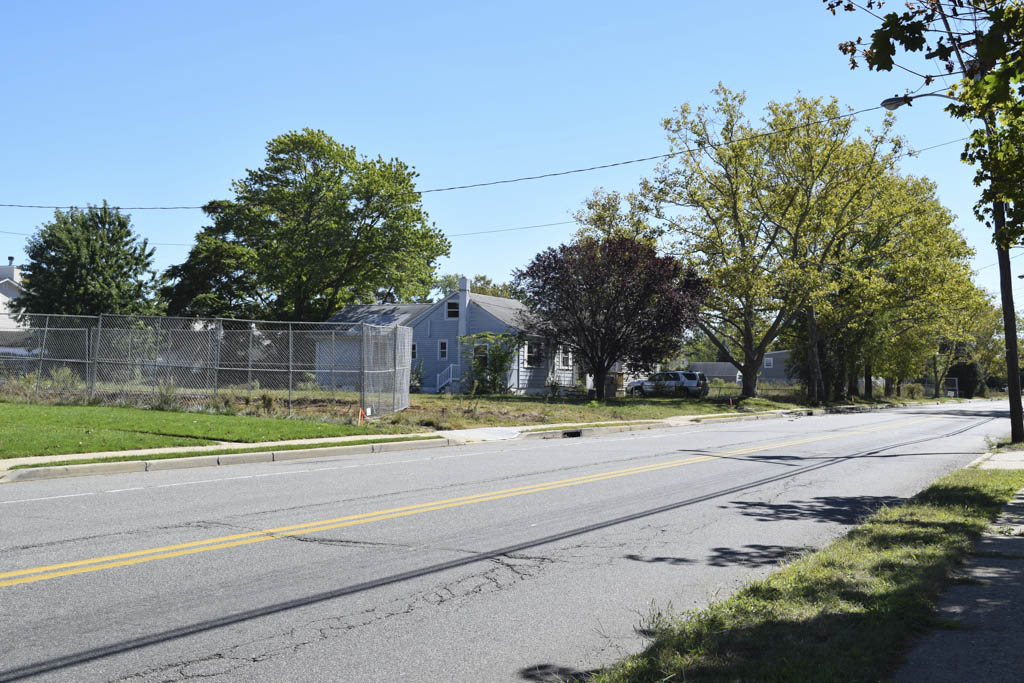SAYREVILLE – Rutgers University and the Sayreville Environmental Commission are creating an implementation strategy to restore and stabilize two borough neighborhoods damaged by tropical storms.
Jeremiah Bergstrom, a landscape architect with the Rutgers Cooperative Extension (RCE), presented the plan for restoring Weber and MacArthur avenues to the Borough Council at a June 26 meeting.
The two primary goals of the project are to maximize flood protection for borough residents and to develop a long-term sustainable management strategy for the properties, Bergstrom said. He emphasized that the properties had to be maintained as open space for passive recreation and floodplain function only.
Additionally, he noted that the streetscape along MacArthur Avenue and pedestrian safety are concerns for residents since there are holes and vacant spaces as a result of the homes being removed. He explained that due to the street having more space, traffic now moves faster through it.
Habitat restoration, primarily forest and meadow, and walking paths and open space for recreational opportunities were also mentioned by Bergstrom as aspects of the project.
The New Jersey Department of Environmental Protection (DEP) acquired 125 homes across 22.5 acres on Weber and MacArthur avenues through its Blue Acres program after those homes were significantly damaged by Hurricane Irene in 2011 and superstorm Sandy in 2012. Most of those homes have been torn down, leaving flood-prone open space behind.
The Blue Acres program purchases properties that have been damaged by or may be subject to damage caused by storms or storm-related flooding, and maintains the properties for flood protection and passive recreation, according to DEP.
Although the properties were purchased and are owned by the state, Sayreville agreed to maintain the properties in perpetuity, according to Bergstrom.
Bergstrom said immediate work on the restoration project, without grant funding or partner contributions, would cost between $400,000 and $500,000. The project is expected to take four years to complete.
“It’s a big effort,” he said. “It’s a significant investment for the community, but broken down over time, I think it can be manageable.”
He cited the U.S. Fish and Wildlife Service, the NJ Tree Foundation and the DEP’s Green Acres program as potential funding partners for the project.
Environmental Commission Chairwoman Theresa Yetsko added that members of the commission are currently researching funding and partnership opportunities.
Resident Art Rittenhouse, a member of the Shade Tree Commission and a former councilman, spoke in favor of the project.
“You’re looking at a project on 22 acres that would be less than $500,000 if you did it right now,” Rittenhouse said. “We’re talking about over a four-year period of time.”
He informed the council that the Shade Tree Commission passed a resolution to provide for the proposed trees at a cost not to exceed $50,000 if the restoration project were approved. The addition of the trees, he reasoned, would begin to restore the area and benefit residents.
“We lost a lot of houses,” Rittenhouse said. “My sister-in-law lost her house. She had to move to Monroe. This would provide something for everybody in the community – to have a place to go over the next four years. I think it’s a project that will help beautify the community.”
Bergstrom said the project would be completed in phases: work on the MacArthur Avenue streetscape; volunteer reforestation; reestablishing meadows; removing portions of roads and infrastructure; and implementing a maintenance program for the process.
The the project’s first phase, he explained, will focus on MacArthur Avenue’s streetscape and install 160 trees where the properties were removed.
Following the presentation, council members discussed authorizing Borough Attorney Michael DuPont to draft a resolution approving the proposed trees. The resolution may appear at a future council meeting.
Contact Matthew Sockol at [email protected].

